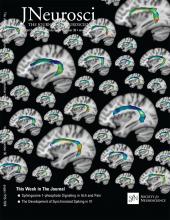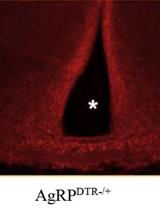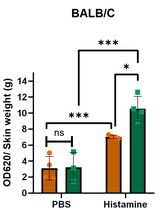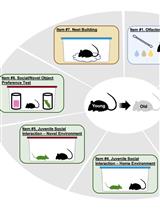- EN - English
- CN - 中文
Inducing Alcohol Dependence in Rats Using Chronic Intermittent Exposure to Alcohol Vapor
长期间歇性暴露于酒精蒸汽以诱导大鼠酒精依赖
发布: 2019年05月05日第9卷第9期 DOI: 10.21769/BioProtoc.3222 浏览次数: 5607
评审: Jena HalesMarina AllerbornAnonymous reviewer(s)
Abstract
Alcohol use disorder (AUD) is a significant public health and economic burden and is often characterized by repeated bouts of alcohol intoxication and withdrawal. Virtually all organ systems are impacted by chronic alcohol exposure. These effects can be investigated using the rat as a model organism; however, rats typically will not self-administer alcohol to levels necessary to achieve physiological and behavioral aspects of dependence. The protocol described herein can be utilized to induce alcohol dependence in rats by administering alcohol vapor to the homecage for an extended period of time. This method allows the researcher to control the level, duration, and pattern of intoxication, and it reliably induces physiological and behavioral aspects of alcohol dependence, allowing for the study of biology and behavior with relevance for AUD in humans.
Keywords: Alcohol dependence (酒精依赖)Background
Alcohol use disorder (AUD) affects over 15 million Americans (SAMHSA, 2015), costing the US ~$249 billion annually (Sacks et al., 2015). The progressive development of AUD is characterized by repeated periods of alcohol intoxication and withdrawal, which initiates a series of neuroadaptations and behavioral changes. Individuals with AUD drink excessive quantities of alcohol, partly because alcohol has both positive (i.e., drinking alcohol for its rewarding effects) and negative (i.e., drinking alcohol to remove or avoid aversive feelings) reinforcing effects in those individuals (Koob, 2003). Alcohol-dependent rats withdrawn from alcohol exhibit many of the same behaviors exhibited by alcohol-dependent humans, including increases in alcohol drinking (e.g., Roberts et al., 1996), motivation to obtain alcohol (e.g., Walker and Koob, 2007), anxiety-like behavior (e.g., Kallupi et al., 2014) and nociception (e.g., Egli et al., 2012; Avegno et al., 2018). These behaviors suggest that rat models of alcohol dependence are a useful tool for investigating the neurobiological underpinnings of alcohol dependence in humans.
Various experimental methods are available for achieving the high blood alcohol levels (BALs) needed to induce alcohol dependence in rats, including gavage (Majchrowicz, 1975), diet (Lieber and DeCarli, 1982), intraperitoneal injections (Varlinskaya and Spear, 2004), and vapor exposure (Rogers et al., 1979). Vapor exposure allows the experimenter control over the amount, duration, and pattern of alcohol administration. Alcohol is administered passively through vapor delivered into the homecage air supply, decreasing the frequency of handling and/or restraint required for some other alcohol administration procedures. The experimenter controls the amount of alcohol administered to each cage, allowing for titration of BALs and achieving reasonably uniform intoxication levels among subjects in a given experiment. Rats exhibit physiological and behavioral signs of alcohol dependence after a few weeks. Behavioral testing can occur during acute withdrawal or protracted abstinence from alcohol vapor; the former allowing for repeated testing (e.g., within-subjects drug dose-response) at the same withdrawal time point on different days. In this protocol, we provide detailed, step-by-step methods updated from previous protocols (Gilpin et al., 2008) for induction of alcohol dependence using chronic intermittent exposure (CIE) to alcohol vapor in rats.
Materials and Reagents
- Razor blade (VWR, catalog number: 55411-055)
- 1.5 ml microtubes (Phenix Research Products, catalog number: MH-815)
- Rats (e.g., Wistar rats, 8 weeks of age; Charles River)
- 95% (v/v) ethanol (Decon Labs, Koptec, catalog number: V1105)
- Alcohol oxidase/buffer reagent (Analox Instruments, catalog number: GMRD-113)
- 100% (v/v) ethanol (Decon Labs, Koptec, catalog number: V1001G)
- Liquinox (Alconox, catalog number: 1232)
Equipment
- Pre-assembled alcohol vapor inhalation system (La Jolla Alcohol Research, Inc.) or equivalent homemade system
- High-speed microcentrifuge (Fisher Scientific, AccuSpin Micro 17, catalog number: 13-100-675)
- Analox AM1 analyzer (Analox Instruments, P-GM7Micro-Stat, catalog number: Analox-AM1)
- Five-gallon carboy (Fisher Scientific, Thermo Scientific Nalgene Carboy, catalog number: 02-960-20A)
- Power strip with a timer (Century, model: BNC-U1)
- Animal scale (OHaus, Valor 3000 Xtreme, model: V31XH2)
Procedure
文章信息
版权信息
© 2019 The Authors; exclusive licensee Bio-protocol LLC.
如何引用
Readers should cite both the Bio-protocol article and the original research article where this protocol was used:
- Avegno, E. M. and Gilpin, N. W. (2019). Inducing Alcohol Dependence in Rats Using Chronic Intermittent Exposure to Alcohol Vapor. Bio-protocol 9(9): e3222. DOI: 10.21769/BioProtoc.3222.
- Avegno, E. M., Lobell, T. D., Itoga, C. A., Baynes, B. B., Whitaker, A. M., Weera, M. M., Edwards, S., Middleton, J. W. and Gilpin, N. W. (2018). Central amygdala circuits mediate hyperalgesia in alcohol-dependent rats. J Neurosci 38(36): 7761-7773.
分类
神经科学 > 行为神经科学 > 实验动物模型
细胞生物学 > 组织分析 > 生理学
您对这篇实验方法有问题吗?
在此处发布您的问题,我们将邀请本文作者来回答。同时,我们会将您的问题发布到Bio-protocol Exchange,以便寻求社区成员的帮助。
提问指南
+ 问题描述
写下详细的问题描述,包括所有有助于他人回答您问题的信息(例如实验过程、条件和相关图像等)。
Share
Bluesky
X
Copy link












